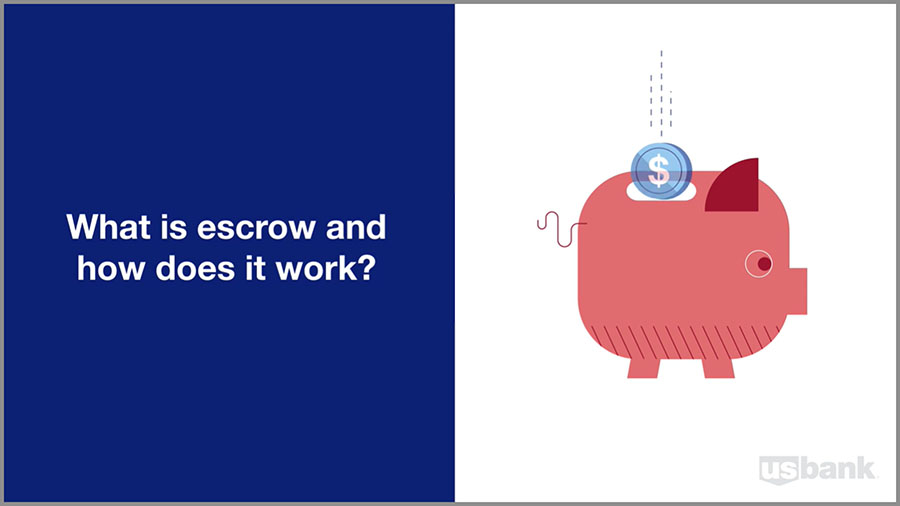6-min read

You’ve found a home you love, complete with a spacious kitchen, the right number of bedrooms and a yard. So how do you get from serious shopper to happy homeowner? By taking out a mortgage to finance the purchase. Here’s what you need to know about the mortgage underwriting process.
What is mortgage underwriting?
You may have heard the term before, but what does underwriting mean exactly? Mortgage underwriting is what happens behind the scenes once you submit your application. It’s the process a lender uses to take an in-depth look at your credit and financial background to determine if you’re eligible for a loan.
Here are the steps in the mortgage underwriting process and what you can expect.
Step 1: Complete your mortgage application.
The first step is to fill out a loan application. The information you provide will help determine if you’re eligible for a loan. Since every situation is unique, the exact documents you’ll need may vary. You’ll likely need to provide:
- ID and Social Security number
- Pay stubs from the last 30 days
- W-2s or I-9s from the past two years
- Proof of any other sources of income
- Federal tax returns
- Recent bank statements or proof of other assets
- Details on long-term debts such as car or student loans
- Real estate property information/Accepted Offer to Purchase (signed by all parties)
Our online application process is a safe and secure way to get started on your mortgage application from your smartphone or computer. After you sign up, you’ll answer simple questions along a guided path and easily import or upload documents. You can start your application on your own, or with the help of a mortgage loan officer. Within three business days of submitting your complete application, your lender will deliver a Loan Estimate (LE) showing your estimated closing costs.

Start your application if you’ve found a home you love.
We’ll confirm your personal and financial information, pull your credit, and then a mortgage loan officer will connect with you about the results.
Step 2: Be patient with the review process.
Once you’ve submitted your application, a loan processor will gather and organize the necessary documents for the underwriter. A mortgage underwriter is the person that approves or denies your loan application. Let’s discuss what underwriters look for in the loan approval process. In considering your application, they look at a variety of factors, including your credit history, income and any outstanding debts. This important step in the process focuses on the three C’s of underwriting — credit, capacity and collateral.
Credit
One of the most important factors in the mortgage approval process is your credit history. The underwriter will review your credit report to see how well you made payments on, or paid off car loans, student loans and other lines of credit. They look for clues that will help them predict your ability to pay back what you borrow.
Capacity
When trying to determine whether you have the means to pay off the loan, the underwriter will review your employment, income, debt and assets. They’ll look at your savings, checking, 401k and IRA accounts, tax returns and other records of income, as well as your debt-to-income ratio. They want to see that you, and any co-borrowers, have the ability to make the payments both now and in the future.
Collateral
Using the current market value of the home, the underwriter will make sure it serves as ample collateral for the loan. This assures the lender that they can recover the unpaid balance in the case of a default. The underwriter may use an appraisal or other form of valuation to assess the home’s worth.
Step 3: Get an appraisal.
A valuation of the property is required to confirm the home’s value aligns with the purchase price. The value of a home is determined by the size, location, condition and features of the property. Comparable homes in the neighborhood also help conclude its value.
Getting a valuation, such as an appraisal protects both buyer and lender by ensuring you only pay what the home is worth. If the home is worth less than the asking price, you may have to bring more money to the closing, negotiate a lower price or walk away altogether. The lender wants to be sure that your loan doesn’t exceed the property’s value so that in the event of default, they can recoup the money loaned to you.
Your mortgage loan officer can help guide you through your appraisal and answer any questions you have about the process. If you have concerns about your appraisal’s accuracy or credibility, there are steps you can take. Talk to your mortgage loan officer about requesting a Reconsideration of Value (ROV) to reassess your appraisal.
Step 4: Protect your investment.
Title insurance and homeowner’s insurance are two useful measures that help protect your investment.
A look at the property history gives you peace of mind about what you’re buying and helps reduce the risk of future title problems. The title search ensures there are no liens, claims, unpaid taxes, judgements or unpaid HOA dues on the property. Once the title search is complete, the title insurer will issue an insurance policy to guarantee the accuracy of the research.
Proof of homeowner’s insurance will also be required. You’ll need to provide a copy of the insurance declaration page and either a paid receipt or an invoice for 12 months of coverage.
Step 5: The underwriter will make an informed decision.
The underwriter has the option to either approve, deny or pend your mortgage loan application.
- Approved: You may get a “clear to close” right away. If so, it means there’s nothing more you need to provide. You and the lender can schedule your closing. However, if your approval comes with conditions, you’ll need to provide something more, such as a signature, tax forms or prior pay stubs. The process may take a little longer, but nothing to worry about if you’re prompt in responding to any requests.
- Denied: If an underwriter denies your mortgage application, you’ll need to understand why before deciding on next steps. There are many reasons for the denial of an application. Having too much debt, a low credit score or not being eligible for a particular loan type are some examples. Once you know the reason for the decision you can take steps to address the issue.
- Decision pending: If you don’t provide enough information for the underwriter to do a thorough evaluation, they may suspend your application. For example, if they can't verify your employment or income. It doesn’t mean you can’t get the loan, but you’ll need to provide further documentation for them to decide.
Step 6: Close with confidence.
Congratulations — you’ve made it to closing day! At least three days prior to closing you’ll receive a Closing Disclosure (CD) from your lender. It includes the loan terms, your projected monthly payments and your final costs. Review this document carefully, especially the funds you need to bring to closing, and if you have any questions, ask your lender.
You’ll also make arrangements for your down payment and closing costs. Plan to bring a photo ID and a cashier’s check for your closing costs with you to your closing. At your closing, you’ll sign the final paperwork, pay any closing costs that may be due and get the keys to your new home.
How long does mortgage underwriting take?
Each situation is different, but underwriting can take anywhere from a few days to several weeks. Missing signatures or documents, and issues with the appraisal or title insurance are some of the things that can hold up the process. Be very responsive to requests for information, and if you need more time to gather requested documents, continue to communicate status with your mortgage loan officer.
Use these helpful tips for a smooth underwriting process.
Your lender handles much of the underwriting process for you. But there are things you can do to make sure your experience is a positive one.
Keep your debt in check.
While your loan is processing, avoid taking on new debt or making other financial changes like closing credit cards or other accounts. Anything that affects your debt-to-income ratio may impact your mortgage approval.
Stay in touch with your lender.
During the underwriting process, there may be questions or the need for more information. Responding promptly to these requests will keep your application moving forward. Our online loan application makes it easier for you to gather the information they need while staying connected with a trusted mortgage loan officer throughout the process.
Be honest about your finances.
There’s no hiding it if you’re not truthful about your income, credit history or assets. Instead, include notes and explanations for anything that may stand out on your credit report or statements, such as a missed payment. It’s a simple thing you can do to help the underwriter make a quicker decision.
Knowing what to expect during the mortgage underwriting process can make it easier to navigate. The more prepared you are, the better off you’ll be. So, keep your debt in check, stay in touch with your lender and be honest about your finances. All these steps will bring you closer to becoming a happy homeowner.

Let’s get you closer to your new home.
An experienced mortgage loan officer is just a phone call or email away, with answers for just about any home-buying question.
Related topics

Home-buying and mortgage process
Learn more about buying a home.

What are mortgage points?
See if “buying points” is right for you.

What is an escrow account?
Explore the basics of escrow accounts.